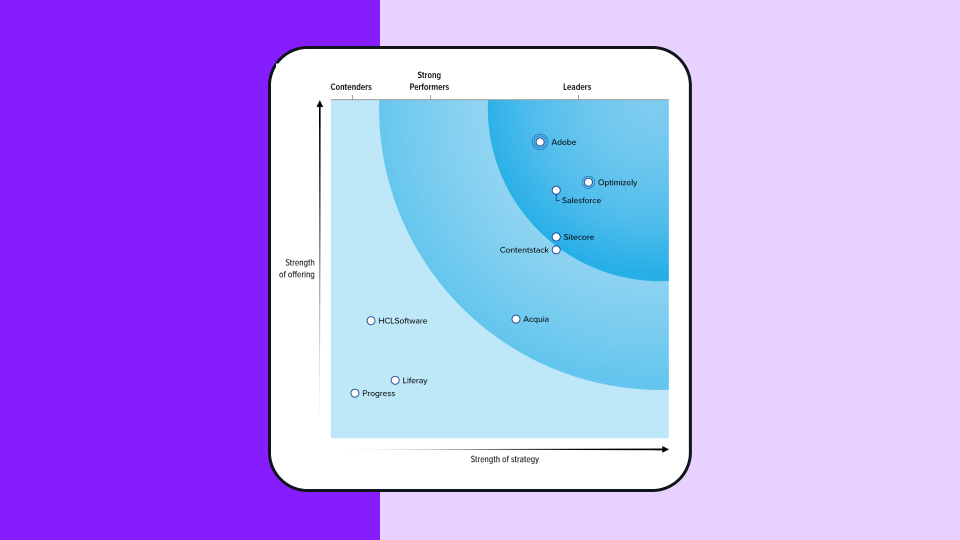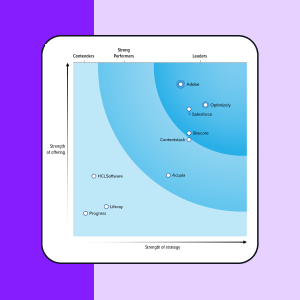Introduction
In this Customer Confidential interview, L’Oréal is the world’s largest beauty company, known for its expansive portfolio of luxury, consumer, and professional brands. But behind the scenes, its Luxe Division is leading the charge in digital experimentation — running more than 200 tests a year to personalize experiences, drive efficiency, and make every customer feel seen. Kelly Jenkins, Director of Testing & Optimization, shares how her team uses Optimizely to scale experimentation, champion inclusive design, and back every decision with data.
From content to conversion: A journey fueled by ROI
- Kelly Jenkins began her career in broad digital marketing at Condé Nast, managing everything from social media to CMS and email marketing — giving her a deep understanding of how content impacts performance.
- Kelly gravitated toward A/B testing in email, where high ROI led her to self-taught coding and the systematic testing of templates across subject lines, structure, and content.
- This experimentation mindset eventually led her to specialize in conversion rate optimization (CRO) — a move driven by her desire to quantify impact and prove the effectiveness of ideas with data, not opinion.
I loved being able to say: I improved this metric by X%, not just I think this email is better.
Kelly Jenkins — L'Oréal Luxe Division
Driving customer inclusion through Experimentation
- At L'Oréal, beauty is more than product — it’s confidence, identity, and self-care, meaning the digital experience must reflect that emotional weight.
- A core UX focus is ensuring people of color can easily find the right shade for their skin tone, leading to experiments designed to create parity in experience and representation across the site.
- Optimization efforts focus on reducing friction in the consideration process, helping users quickly find the right product for their unique needs.
- “We want everyone to feel like the website’s made for them” — a goal achieved through thoughtful testing and inclusive design principles.
Spotting trends and testing to compete with digital-first disruptors
- L'Oréal’s heritage as a pre-digital brand means experimentation is key to staying competitive in a fast-moving, trend-driven industry.
- By investing in a dedicated testing team, L'Oréal ensures it’s not just reacting to competitors, but validating ideas in-house before scaling.
- Experimentation gives traditional business units the data-driven confidence they need to adopt new strategies, helping bridge the gap between instinct and ROI.
Personalization that performs: Subtle UX changes, significant results
- L’Oréal’s testing team uses site behavior signals — like most-viewed categories — to drive homepage personalization, surfacing the most relevant product categories for returning users.
- In one test, three versions were trialed: overt personalization (“We noticed...”), subtle personalization, and a non-personalized control.
- The subtle version won, delivering the highest engagement, add-to-bag rate, and ultimately better conversion and revenue outcomes — without calling attention to the personalization itself.
Saving dev time with features like Custom Metrics and Extensions
- Custom metrics allow Kelly’s team to go beyond generic KPIs, tracking category-specific performance like conversion rate for makeup vs. overall site conversion — giving sharper insight into what’s working.
- Being able to analyze experiments directly within Optimizely’s platform has streamlined reporting and reduced reliance on external tools.
- Reusable extensions — such as countdown timers or shipping deadline banners — free up dev time by allowing non-engineers to launch repeatable tests quickly.
We have one developer... So, having [these features], she doesn't have to be the one to set [them] up. That's been super helpful in terms of efficiency.
Kelly Jenkins — L'Oréal Luxe Division
Consistent journeys — matching media messaging with targeted segmentation
- The Testing & Optimization team uses segmentation and targeting to align landing page experiences with upstream media campaigns — ensuring users see consistent messaging and visuals from ad to page.
- This approach is especially valuable during high-traffic periods like Black Friday and Cyber Monday, where relevance drives clickthrough and conversion.
- Rather than creating multiple PLP versions, personalized overlays and messaging are dynamically shown only to relevant users — improving efficiency without sacrificing experience.
- Event-specific segments (e.g. QR code attendees) are shown tailored thank-you or promo messaging, avoiding redundant page creation while enhancing perceived personalization.
Scaling to 200 Experimentation tests a year
- Kelly had used many optimization platforms during her agency days and called Optimizely “by far the best” — a key reason it became her top choice for L’Oréal’s Luxe Division.
- Before switching, her team was being held back by a free platform that lacked both sophistication and usability — making experimentation harder to scale across a global brand — spending a significant amount of time on manual, mundane tasks like data pulling.
- Since adopting Optimizely, L’Oréal’s Luxe team now runs around 200 experiments annually, thanks to significant gains in test setup and analysis efficiency.
Optimizely helped us enormously... I want [my team] to be thinking more about 'what do the results mean', not just 'what were the results'.
Kelly Jenkins — L'Oréal Luxe Division
Experimentation can’t be an afterthought
- It's vital to prove what you're doing works, especially in marketing — scaling experimentation starts with proving its value to the business and getting stakeholders on board.
- Effective programs aren’t accidental; they need dedicated headcount, resources, and internal prioritization.
- Even small teams can deliver big returns, but only if experimentation is treated as a core function, not a side project.
Why Optimizely became the go-to for L'Oréal
- Kelly first discovered Optimizely while leading CRO at an agency, where she handled everything from UX analysis to test ideation, build, and reporting — much of it directly in the platform.
- Compared to other tools she used at the time, Optimizely stood out for its ease of use and depth of support resources, especially the comprehensive Knowledge Base.
- That experience shaped her decision to bring Optimizely into L’Oréal: Kelly knew her team needed a platform that empowered them to solve problems independently without relying on external support.
Conclusion
L’Oréal’s Luxe Division has built a scalable, high-impact experimentation program that blends efficiency with empathy. By running over 200 experiments annually, leveraging custom metrics, and using tools like extensions and segmentation, the team has streamlined test deployment while delivering more inclusive, personalized experiences. With a clear focus on business outcomes — from improved conversion rates to increased add-to-bag and revenue metrics — L’Oréal has proven that thoughtful experimentation isn’t just a digital strategy, it’s a growth engine.
Industry
Consumer goods

